Adaptation Framework for the University of Edinburgh

The University of Edinburgh has just launched its Adaptation Framework based on a whole institution approach as part of commitments in our Climate Change Strategy, Zero by 2040. Liz Vander Meer, Climate Policy Manager, talks through the Framework.
The IPCC (Intergovernmental Panel on Climate Change) set out the importance of not only climate change mitigation but also adaptation in their special report, SR15, published in October 2018. Climate-related risks to health, livelihoods, food security, water supply, human security and economic growth are all increased at 2 degrees of warming compared to 1.5 degrees, requiring mitigation but also adaptation now and in the future.
Adaptation to climate change is not just important in other parts of the world. Scotland already experiences climate change impacts such as warmer, wetter autumns and winters and hotter summers. We have seen an increase in extreme weather events as well as rising sea levels along our coasts. These changes can cause overheating in buildings and in urban areas more generally, flooding and they also have an impact on Scotland’s biodiversity. Effects on other species may include young animals perishing in heat waves or plants flowering out of sync with their pollinators (see Scottish Natural Heritage). Humans and other organisms will all face pressures.
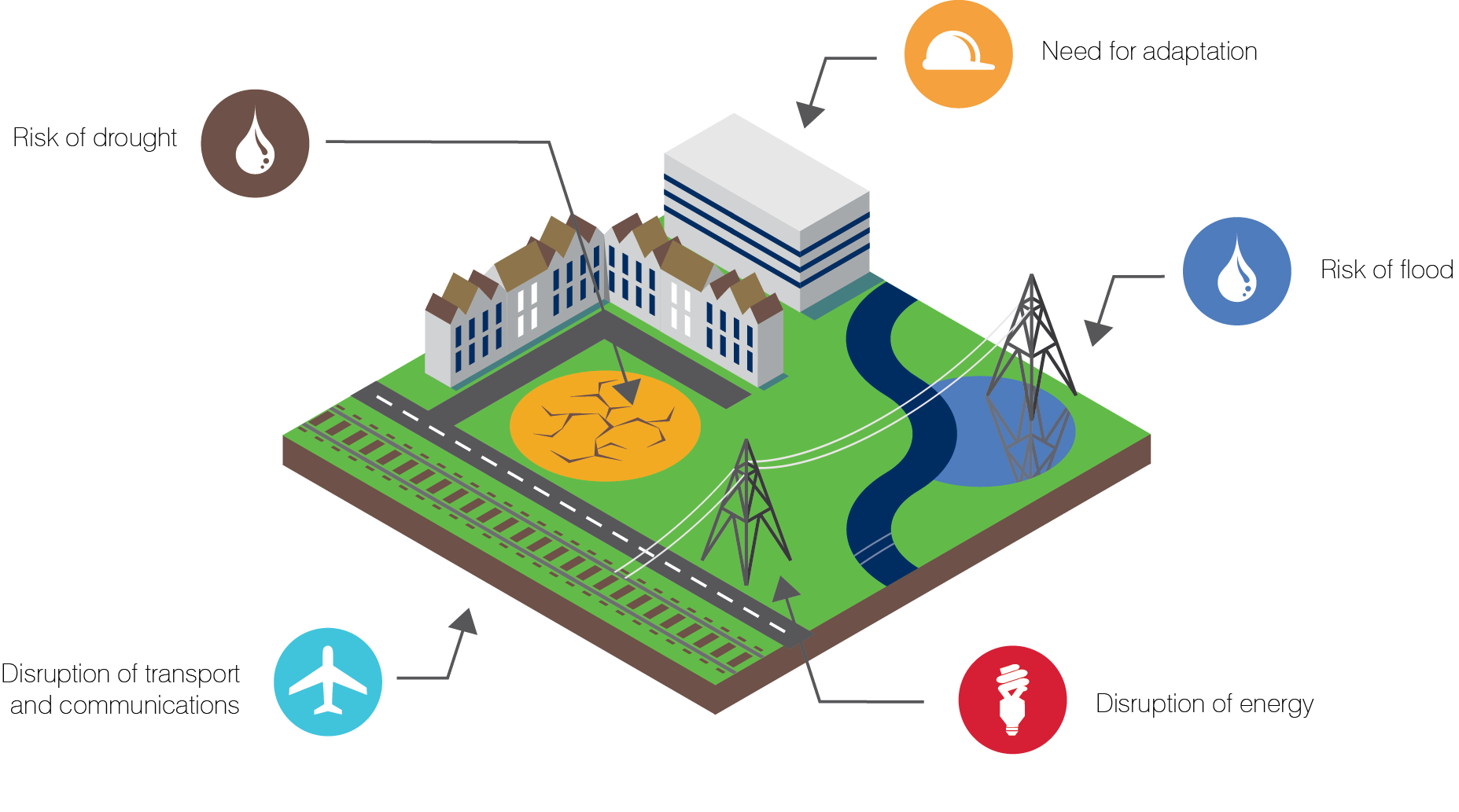
Our Adaptation Framework takes into account risks to both humans and other species. We identified physical, supply chain and reputational risks to understand why we must take action. Actions address risks and move us towards resilience, considering how we can benefit not only ourselves, but for other species and protect or restore valuable ecosystem services for wellbeing. We embrace the following vision:
The University will become more climate-resilient, creating a sense of place on campuses and promoting well-being and biodiversity, as an integral part of the wider context of the city of Edinburgh.
As part of this adaptation work, we have also been developing a new biodiversity strategy with an embedded updated biodiversity policy, which we hope to launch this year; the strategy emphasises the importance of biodiversity and green spaces to human health and wellbeing through crucial ecosystem services they provide and closeness to nature, while also valuing species in and of themselves.
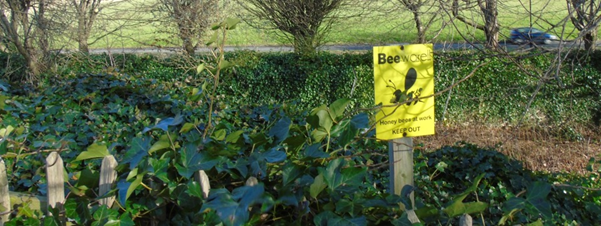
Photo credit: Elizabeth Vander Meer
Our Priorities
We have determined priority areas for action that follow our priorities in Zero by 2040:
- Priorities in research, learning and teaching: living lab projects, mapping risks to research, teaching and learning for adaptation
- Priorities identified for operations and landscaping: mapping and ranking climate change risks to the University, the inclusion of adaptation in our Estates sustainable building design programme, testing of green infrastructure tools
- Priorities for partnership working: strengthening and growing links in Edinburgh and beyond, exploring funding opportunities for collaborative projects
- Priorities for communications as part of a climate ready community: raising awareness and engagement internally with staff and students and externally with the public
We have also identified key actions to take first in our adaptation journey:
- Continued development of risk and resilience plans
- Expansion of living lab projects in adaptation
- Adaptation as part of estates development, in the new Estates sustainable building design guidance
- Use of the Natural Capital Standard for green and blue infrastructure, being developed by Scottish Wildlife Trust, to conserve and expand green spaces on campuses for adaptation and biodiversity
- Continued engagement with the city through Edinburgh Adapts
- Internal and external communication plans for engagement
How can you get involved in key actions?
We encourage students and staff across the University to contact us to get involved in supporting adaptation work. You can propose research projects in adaptation and collaborate with the Department for Social Responsibility and Sustainability, Estates and other internal colleagues to apply your ideas to our campuses, or in our city partnerships for instance with Edinburgh Adapts or the Edinburgh Living Landscape Partnership; we encourage wide-ranging community engagement through projects with and support of community groups and social enterprises.

Liz Vander Meer, Climate Policy Manager
We also have ideas for living lab student projects that academic staff or students could take up that would support our Adaptation Framework goals. To show you how exciting these projects can be, just keep reading!
Building Futures: refurbishing a building on central campus for future learning and future climate
In the Building Futures project, MSc Advanced Sustainable Design students and student volunteers across disciplines collaborated with the Department for Social Responsibility and Sustainability and Estates in 2017-18 to re-envision 7 Bristo Square on central campus for future learning and future climate from 2030; completed in 1973, the building has housed canteens, medical centres and last year contained teaching rooms and decant accommodation.

Photo credit: Building Futures project
The project explored how to create sustainable places for education, addressing how to make learning spaces thrive in a digital world and considering how current building stock can be adapted and transformed in the face of climate change and resource scarcities.
Analyses included mapping air flows, daylight and greening possibilities with solutions drawing from Passivhaus and adaptive biophilic design for instance.

Daylighting Analysis – Kuswinarni and Seaver, Thermal Zones and the Atrium – Salazar and Martinez, Natural Response (biophilic design) – Kiczka and Vasu, Roof Garden and Planted Façade – Sun and Huang
The final exhibition was showcased at the Planetary Health Conference 2019 in Edinburgh so that 400 delegates had the opportunity to engage with the work. The exhibition catalogue compiles the students’ designs and shows us inspiring possibilities to adapt our campus buildings.

Planetary Health Conference 2019, photo credit: Elizabeth Vander Meer

Aning Kuswinarni and Elizabeth Seaver show their work in the exhibition catalogue, photo credit: Elizabeth Vander Meer
How Green is Your Campus? Green infrastructure mapping for adaptation, biodiversity and student and staff experience
Our “How Green is Your Campus?” project received an internal Student Experience Grant and involves a collaboration between EDINA, digital experts in Information Services Group, the Department for Social Responsibility and Sustainability (SRS), Scottish Wildlife Trust (SWT), student supervisor and student intern. It will result in the development of a mapping application or digital tool that will be used to collect and map the type, location and quality of green and blue infrastructure on campuses.

Pollock halls, student accommodation
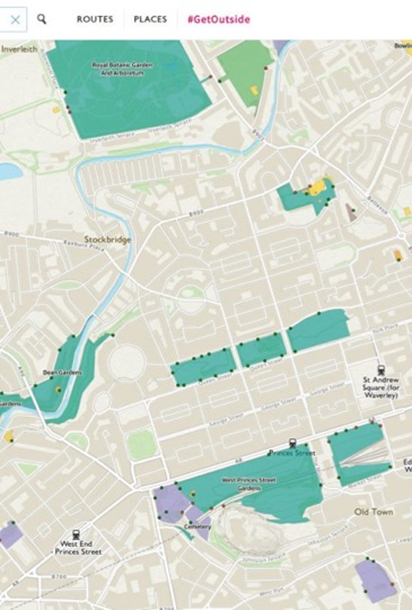
Photo credit: How Green is Your Campus project
EDINA will also integrate additional layers of data on flood risk and overheating (urban heat island effect). The tool is based on Scottish Wildlife Trust’s Natural Capital Standard or NCS, their interpretation of the European GRaBS tool. The NCS scoring system ranks green (and blue) spaces in terms of different ecosystem services they provide such as climate and flood regulation, carbon sequestration, air quality, biodiversity value and human health and wellbeing from closeness to natural places.
The mapping application is meant to be used by Estates Development to preserve green and blue spaces in the context of new developments as well as for reconfiguring existing campus spaces. It will also show students and staff the range of green and blue infrastructure existing on University campuses, for engagement and interaction. Students and staff who use the application will gain a greater awareness of different types of green spaces on campuses and it will create opportunities for them to engage in making the University ‘greener’.
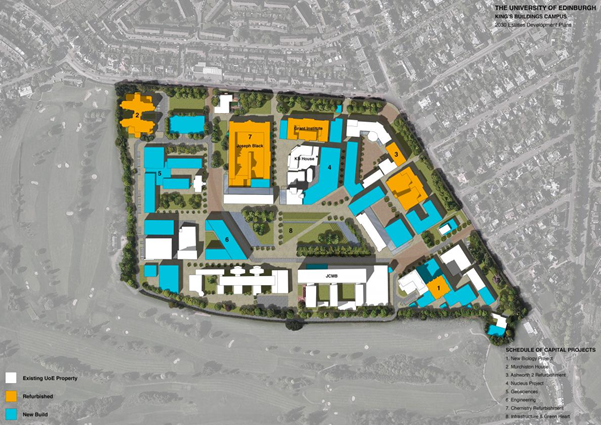
King’s Buildings masterplan for 2030, credit: Estates
Hudson Beare Lecture Theatre: how to adapt a Grade B listed brutalist building
A final project underway with Historic Environment Scotland (HES) considers how to adapt a Grade B listed lecture theatre, the Hudson Beare at King’s Buildings. The University will need to preserve and maintain traditional buildings into the future, and these buildings account for about 15% of building stock on campuses.
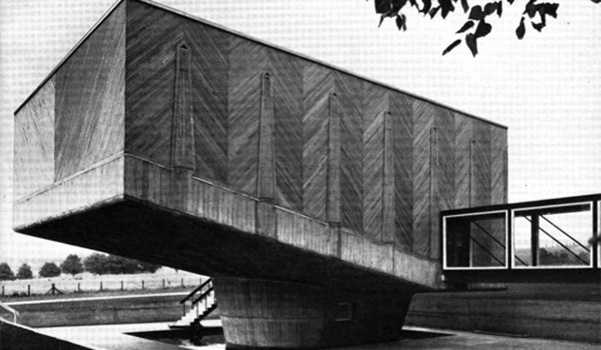
Hudson Beare Building, Photo Credit: Estates
We have installed tinytag sensors inside and outside the lecture theatre to obtain temperature and humidity data and timetabling have undertaken a heat mapping exercise based on teaching times and the number of occupants in the lecture theatre each day. We are proposing a dissertation placement or coursework project to analyse hot/cold balance, moisture and air flow in the Hudson Beare, considering current and future climate, in order to determine the most appropriate adaptation solutions. We are looking for a student to take up this valuable feasibility project that could help to define refurbishment work across University listed building stock.
Get in touch
Please get in touch if you would like to undertake a living lab project or engage in another way with the Adaptation Framework. We are keen to hear from students and staff.
Email Liz at Elizabeth.VanderMeer@ed.ac.uk


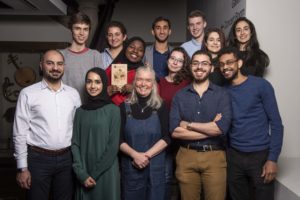


Recent comments